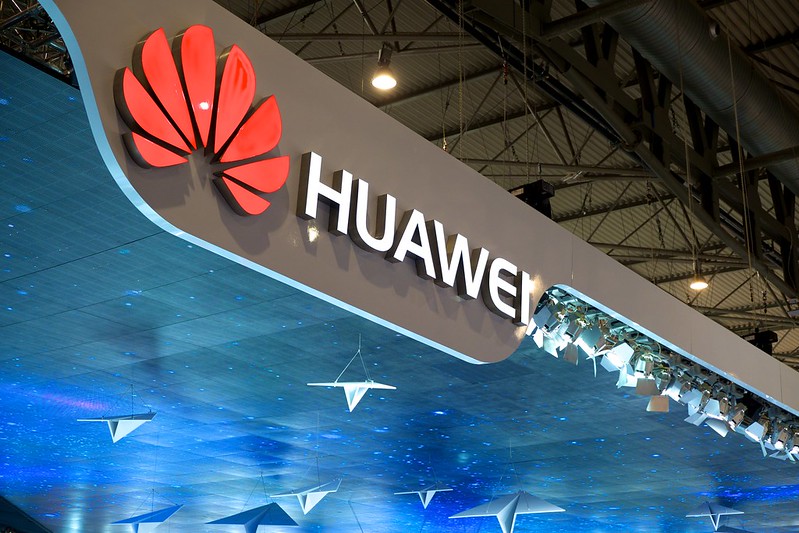Election Victory Gives New Momentum to Hong Kong Democracy Movement
Lawfare’s biweekly roundup of U.S.-China technology policy news.

Published by The Lawfare Institute
in Cooperation With

Momentum for Hong Kong Democracy Movement Surges Following Election Landslide
On Nov. 24, pro-democracy candidates won sweeping victories in elections for Hong Kong’s District Council. Candidates supporting the city’s democracy movement—commonly known as pan-democratic candidates—walked away with 389 of 452 council seats, gaining 265 seats. Candidates identifying as pro-Beijing, meanwhile, saw their representation on the council shrink from 300 seats to just 58. These results, and the record-high turnout in the election, represent a strong rebuke to China’s leadership and its handling of Hong Kong’s democracy protests. Votes cast totaled just under 3 million, or 71 percent of eligible voters, compared to levels of 40 percent in recent elections.
Many analysts believe that the pan-democratic electoral success lends momentum to the protesters and increases their legitimacy. Although protesters paused their activity in the week following the election, thousands turned out on Dec. 1 for new demonstrations. As a result of the election, the leaders of Hong Kong’s pro-Beijing political party offered a public apology for their “major defeat,” and other political factions have distanced themselves from the city’s Beijing-backed administration. However, the new district council majority is likely to have limited impact on protesters’ fate. The council exercises some oversight of local budgets and municipal offices, but it is not Hong Kong’s main legislature and has few responsibilities that directly affect protesters. The council also has limited influence in the selection of Hong Kong’s chief executive. Council members constitute only 10 percent of the electors who choose the chief executive, with the remaining 90 percent largely handpicked by Beijing.
It is not yet clear how Beijing will respond to the election. The election results came as a surprise to Chinese Communist Party (CCP) leaders, who had argued that a “silent majority” of Hong Kong citizens disapproved of the protest movements. Beijing-controlled media outlet Xinhua did not report the election’s outcome on Nov. 25, writing only that voting had finished and protests had “seriously interfered with election proceedings.” In the wake of election results, Hong Kong’s pro-Beijing Chief Executive Carrie Lam has pledged to “improve governance” but looks unlikely to accede to recent protester demands, such as investigating police violence.
Chinese officials have said that foreign actors supported the pro-democracy candidates. Last week, the editor of the Global Times, a pro-CCP tabloid, claimed that “the West” had been “helping” opposition candidates, while a China Daily article also chalked up the results to interference by external forces.
Meanwhile, the protests have begun to attract the collective attention of U.S. lawmakers. On Nov. 27, President Trump signed into law the Hong Kong Human Rights and Democracy Act, which authorizes him to sanction individuals responsible for human rights abuses in Hong Kong. Trump also signed a bill that bans exports of U.S.-made tear gas and crowd-control equipment to the city. The pan-democratic electoral victory, along with the U.S. Senate’s near-unanimous support for the Hong Kong Human Rights and Democracy Act, pushed Trump to enact these laws despite reluctance among his aides.
Rising tensions over the treatment of protesters in Hong Kong have already clouded the mood surrounding U.S.-China trade negotiations and the countries’ broader relationship. Last week, Chinese leaders summoned U.S. Ambassador Terry Branstad to demand that the U.S. cease “interfer[ing]” with its internal affairs. In reaction to the Hong Kong Human Rights and Democracy Act, China is also reportedly considering barring U.S. lawmakers from its territory. Despite these strains, many commentators believe that China’s economic interests are likely too strong to allow conflict over the treatment of Hong Kong protesters to undermine a “phase one” trade deal altogether. While Beijing previously threatened “countermeasures” if the U.S. enacted pro-Hong Kong legislation, one spokesman suggested last week that so long as Trump refrains from invoking sanctions, he would not damage the U.S.-China relationship.
Should the Hong Kong protests persist, many fear that they might also jeopardize the city’s role as a global business and financial center. Economists estimate that, owing to the recent political turmoil that has decreased the city’s tourism and retail sales, Hong Kong’s economy will shrink 1.3 percent this year and another 3 percent in 2020. Sanctions by the U.S. could only exacerbate the city’s flagging trade and growth. Still, Alibaba’s successful secondary listing in Hong Kong last month, which saw Alibaba’s share price rising even amid the election, may temper fears regarding the city’s business climate.
U.S. Seeks to Tighten Controls on Huawei, but the Firm Seems Just Fine
U.S. regulators have introduced new measures to further limit Huawei’s access to the U.S. technology market, as evidence mounts that the company has largely weathered a downturn caused by the Trump administration’s May decision—still not fully implemented—to prohibit it from purchasing U.S. components for its products. In a move widely seen as targeting Huawei and other Chinese firms, the Trump administration last week proposed a new rule that would allow the secretary of commerce to review or block purchases of telecommunications equipment supplied by, designed by or subject to the jurisdiction of a “foreign adversary.” Under the proposed rule, the secretary of commerce would have authority to decide which countries constitute “foreign adversaries” after consulting with other cabinet-level officials.
The Commerce Department is also weighing further restrictions that would prohibit U.S. companies from selling even nonsensitive technologies produced abroad to Huawei. This move would close a gap in U.S. export controls that have allowed certain U.S. semiconductor firms, including graphics-chip maker Nvidia, to continue selling millions of dollars of equipment to Huawei. Because Nvidia and other firms design their high-tech semiconductors domestically but manufacture the chips abroad, the completed products currently fall outside the scope of the May prohibition. Meanwhile, the Federal Communications Commission voted to ban purchases of Huawei and ZTE equipment through the regulator’s annual $8.5 billion Universal Service Fund, which subsidizes U.S. broadband services.
Taken together, the regulatory actions may signal a change of direction for the Trump administration, which in November gave temporary licenses to certain U.S. companies to continue selling to Huawei and granted a third consecutive three-month delay on the May prohibition’s full implementation. Since the ban’s initial announcement in May, U.S. companies have quietly lobbied the Trump administration to delay the ban’s full implementation and narrow its scope, arguing that many U.S. products sold to Huawei do not relate to national security.
The Trump administration has also said that the United States will discuss China’s growing influence over 5G networks with allies at this week’s NATO summit in London. This announcement comes amid reports that German Chancellor Angela Merkel will restrict Huawei’s participation in German 5G efforts. The German government also plans to buy a temporary stake in German high-tech companies to ensure that they are not sold to investors outside the EU, a response to concerns that Chinese technology firms may acquire sophisticated EU technology through mergers and acquisitions and eclipse German industry. Britain, meanwhile, has postponed a decision on Huawei’s participation in its 5G networks pending Brexit.
Despite setbacks in the United States and Europe, Huawei has continued to post strong numbers. On Oct. 16, Huawei announced revenues of $89 billion for the first nine months of 2019, a 24 percent year-over-year increase. Huawei also recently released the Mate 30 smartphone, which analysts say contains no U.S. chips—something experts believed would be a tall order, since the firm had relied heavily on American suppliers for semiconductors, antenna switches, power amplifiers and other parts. As U.S. regulators have brought the company under increased scrutiny, the telecom giant has stockpiled U.S. components, identified alternative suppliers, and signed lucrative deals to expand its footprint in markets where U.S. export controls have little sway, including Russia, Kazakhstan, Mexico and Peru.
In Other News
Leaked Chinese government documents—dubbed “the China Cables”—have shed further light on the tactics and goals of China’s surveillance and reeducation programs in its northwestern region of Xinjiang, where more than a million Muslims—predominantly ethnic Uighurs—have been detained in a campaign to combat terrorism and religious extremism. The documents represented the second major leak of CCP documents on the Xinjiang campaign and paint a harrowing picture of high-security camps designed to induce ideological compliance and restrict access to the outside world. In response to reports of human rights abuses at the camps, the U.S. House of Representatives on Tuesday passed a bill recommending targeted sanctions on Xinjiang officials and prohibiting the sale of U.S. goods to “any state agent in Xinjiang.” The bill is a modified version of a Senate bill approved in September. The House’s modified version will now return to the Senate, where it is likely to pass with strong support. The bill’s passage comes shortly after new reports have revealed news that technology from U.S. companies has supported China’s efforts to create a database of DNA samples to help track and identify Uighurs in Xinjiang.
Additional reporting shows that Chinese-owned technology firm ByteDance, currently facing a national security probe in the United States for the data collection practices of its social media app TikTok, has assisted the Chinese government’s surveillance efforts in Xinjiang. The company has also been sued by a U.S. resident who claims the social media firm secretly sent her data to China, where it can be combined with information from Chinese databases, to run analytics that help the company place more targeted ads. ByteDance’s TikTok also came under fire for temporarily locking the account of a U.S. teenager who discussed Xinjiang’s detention centers on the platform. The company later publicly apologized and reinstated the teenager’s account.
China’s Ministry of Industry and Information Technology has implemented a measure stipulating that telecommunications companies selling SIM cards in China must use facial recognition technology to identify buyers. Commentators have tied the measure to China’s efforts to police speech. At the same time, Chinese technology firms have proposed international standards on surveillance and facial recognition technology at the United Nations. The proposals would support campaigns by companies like Dahua and ZTE to increase adoption of their products in third-country markets. Chinese surveillance technology has already gained a foothold in numerous countries in Central Asia, parts of Latin America such as Ecuador and Venezuela, and African nations including Zimbabwe and Ethiopia. In some cases, these arrangements allow Chinese companies to gain access to data on their citizens. In 2017, for example, Zimbabwe provided to Guangzhou-based CloudWalk Technology photographs of citizens to train the company’s AI algorithms to recognize African faces. Domestically, Chinese financial-technology companies are widely expected to roll out facial-recognition-enabled mobile payment systems in the coming year, though Chinese citizens have voiced concerns about the data privacy implications of the systems.
Meanwhile, the Cyberspace Administration of China has published new rules aimed at combating fake news online. The measures, which are set to take effect on Jan. 1, 2020, require that video or audio content using AI or virtual reality technology must be clearly marked to differentiate it from other forms of media.
Recent reports may shed light on Chinese espionage efforts. Australia is investigating the death of a businessman who had informed authorities that the Chinese government had sought to install him in Australia’s parliament. A defector to Australia has claimed to be a former Chinese intelligence operative; he alleges that Chinese military intelligence operatives have run sophisticated election interference campaigns in Taiwan and Hong Kong. Meanwhile, Czech intelligence agencies have reported that China has stepped up efforts to recruit spies in the country. The announcement comes amid growing concerns over Chinese intelligence activity in Belgium, where authorities say Chinese spies have sought to gather information on NATO and the European Union, both of which have international centers in Brussels.
Commentary
In the New York Times, Natasha Kassam contends that Taiwan has successfully resisted China’s efforts to sabotage its democracy, while Karen Cheung reflects on the lasting effects that Hong Kong protests will have on the city’s residents. At the Australian Strategic Policy Institute, Keith B. Richburg argues that the district council elections prove Beijing needs to change its Hong Kong strategy. For the Diplomat, Brian Wong writes about the potential for compromise between pro-Beijing and pro-democracy interests after Hong Kong’s elections. Matthew Continetti in the National Review discusses the dangers to the global order that may arise from cracks forming in China’s authoritarian model.
For the Council on Foreign Relations, Benn Steil and Benjamin Della Rocca examine the consequences of China’s efforts to boost corporate borrowing during the U.S.-China trade war. In the Financial Times, Richard Waters writes that the U.S. government’s crackdown on tech imports from China signals deepening distrust between the two nations, and Martin Sandbu explores how the European Union can shape its China policy to better defend its interests. Noah Barkin discusses in Foreign Policy how Germany has grown more suspicious of Huawei and how this attitude could spread to other European countries.
For Lawfare, Julian Ku argues that the Hong Kong Human Rights and Democracy Act carries powerful symbolic force. Alvin Y.H. Cheung writes that the Hong Kong elections should prompt U.S.-based commentators to reevaluate their understanding of Hong Kong and the pro-democracy movement. Doug Stephens IV discusses last month’s ASEAN meeting and Chinese Premier Li Keqiang’s call for a code of conduct for the South China Sea.






